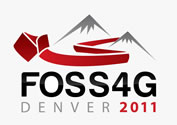Virtual Globes For Environmental Analysis
Virtual Globes were initially released as effective and intuitive tools to view satellite and aerial photos directly superimposed on the three-dimensional model of the globe. The constant update of increasingly accurate and detailed images and the ability to customize the content through the direct mapping on the globe of any geographically localized phenomenon (physical, environmental, social, etc.), has increased not only the common and popular use of virtual globes but has also offered great opportunities for geographical representation and analysis in science.
The paper presents examples of using virtual globes for environmental purposes; in particular, three different possible solutions for the visualisation of environmental 4-dimensional variables within a specific open-source virtual globe developed by NASA (NASA World Wind) are described.
The choice of World Wind is due to its code openness and hence to the possibility of customizing it in the content and of extending its functionality. The characteristic of being written in Java makes it a platform-independent program (viewer directly executable on different operation systems) and accessible by simple web-browsers (like applet or via Java Web Start technology).
In detail we present an introduction to the main characteristics of the specific virtual globe used, a solution to show 3½D environmental variable using a WMS data-transfer approach, a solution to show 4D environmental variables using a vector-based model and an innovative systems we implemented to visualise a complete 4D doxel-model built from environmental data provided in netCDF format.
The WMS approach uses the ability to superimpose to the terrain model implemented in Word Wind any 2D layer provided by WMS services with multi-dimensional data capabilities as defined in the OGC Protocol; the vector-based model uses the ability to place any three-dimensional model with arbitrary geometry and size in exact positions over the globe virtual; the doxel-based model represents the spatial domain of the environmental variable as union of doxels (dynamic voxel) distributed along a regular three-dimensional grid.
Conclusion and future developments are finally drawn.
Prof. Maria Antonia Brovelli
Degree with honors in Physics, PHD in Geodesy. Vice rector of Polytechnic of Milan with responsability for the Como Campus. Professor of GIS and Internet GIS.











